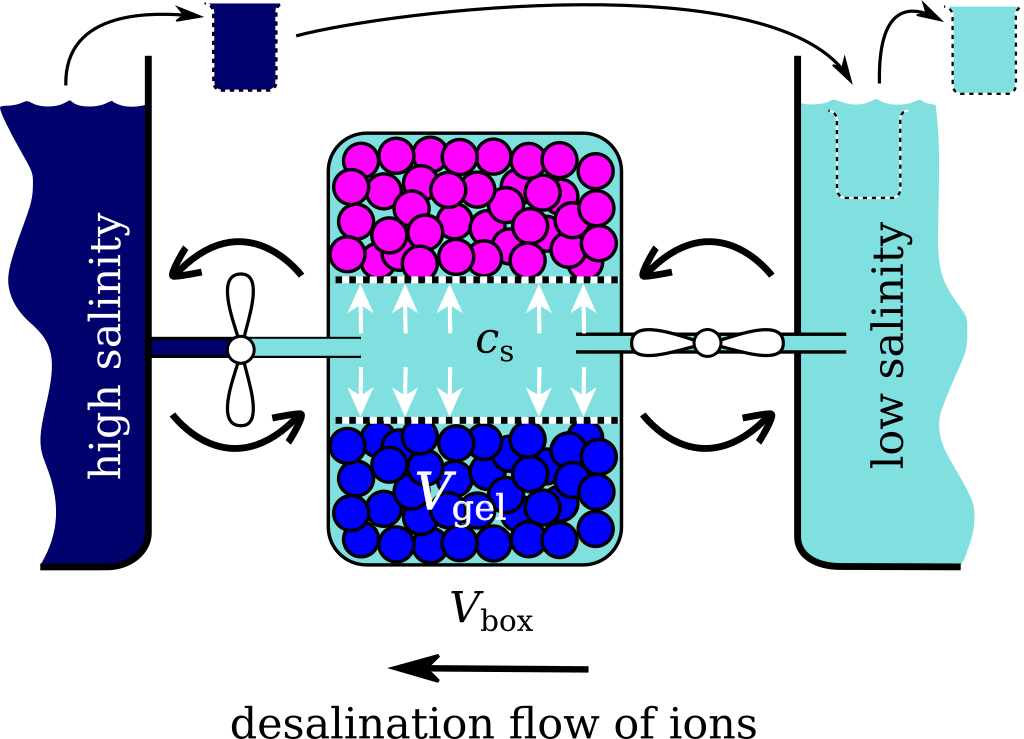La desalinización del agua de mar / The desalination of seawater
La desalinización del agua de mar
The desalination of seawater
- Cómo convertir el agua de mar en agua potable
- How to convert seawater into drinking water
Aunque el agua es uno de los recursos más abundantes del planeta y llega a ocupar cerca del 70% de la superficie de la tierra, hay que tener en cuenta, que el 97% del agua es salada, y esta no es apta para el consumo humano (Econet, 2017). Desde la antigüedad, han existido algunas formas de convertir el agua de mar en agua potable, estos métodos se conocen como procesos de desalinización.
El proceso de desalinización o desalación del agua de mar, es algo que existe desde hace tiempo, ya en la antigua Grecia se hervía el agua para sacarle la sal y por su parte, los antiguos romanos lo hacían por proceso de filtración a través de arcilla. En la actualidad, aunque principalmente existen dos formas y sus proceso básico son, al igual que la antigüedad, la filtración y la evaporación (Coutts, 2019; Martins, 2017) estos son mucho más sofisticados gracias a los avances tecnológicos que se han alcanzado con el transcurso del tiempo, entre las técnicas más difundidas se encuentran las que son bajo los principios de ósmosis inversa y de condensación, estos métodos, aunque ya se pueden utilizar, tienen aún problemas de costos, ya que son muy caros de implementar y también afectan a la vida marina, pero las investigaciones recientes apuntan a revolver esto y así disminuir los costes y causar un impacto ambiental menor.
La ósmosis inversa, imita el proceso natural de ósmosis, pero, tal como lo indica su nombre, lo hace de manera inversa, es decir, la ósmosis natural se encarga de, a través de una membrana semipermeable, enviar agua desde una zona que se encuentra con baja concentración de diferentes elementos, a otra zona que se encuentra con alta concentración de dichos elementos; mientras que en el caso de la ósmosis inversa, hace exactamente lo contrario, este proceso envía el agua desde una zona de alta concentración de, en este caso sales y otros elementos que hay en el agua de mar, a otra en la que no existen estos elementos y da como resultado agua que se puede considerar dulce por su baja cantidad salina y de otros minerales.
La condensación, es el proceso que se encarga de calentar el agua de mar para producir vapor y luego, recoger el agua evaporada, este método de destilación, fue mencionado por el filósofo Aristóteles y es el que utilizaban los antiguos navegantes griegos.
Componentes del Diseño de una Planta de Desalación por Ósmosis Inversa
This file is licensed under the Creative Commons Attribution-Share Alike 3.0 Unported license.
Although water is one of the most abundant resources on the planet and comes to occupy about 70% of the earth's surface, it must be taken into account that 97% of the water is salty, and it is not suitable for consumption human (Econet, 2017). Since ancient times, there have been some ways to convert seawater into drinking water, these methods are known as desalination processes.
The seawater desalination process is something that has been around for a long time, and in ancient Greece the water was boiling to remove the salt and for its part, the ancient romans did it by filtering through clay. At present, although there are mainly two forms and their basic process are, like antiquity, filtration and evaporation (Coutts, 2019; Martins, 2017) these are much more sophisticated thanks to the technological advances that have been achieved through the time, among the most widespread techniques are those that are under the principles of reverse osmosis and condensation, These methods, although they can already be used, still have cost problems, they are very expensive to implement and also affect the marine life, but the recent research try to solve this, reduce the costs and cause a less environmental impact.
Reverse osmosis, mimics the natural process of osmosis, but, as its name indicates, it does so in reverse, that is, natural osmosis is responsible for, through a semipermeable membrane, sending water from an area that is it finds with low concentration of different elements, to another zone that is with high concentration of said elements; while in the case of reverse osmosis, it does exactly the opposite, this process sends the water from a high concentration zone of, in this case salts and other elements that are in the seawater, to another in which they do not exist these elements and results in water that can be considered sweet because of its low salt and other minerals.
Condensation is the process that is responsible for heating seawater to produce steam and then collecting evaporated water, this method of distillation, was mentioned by the philosopher Aristotle and is the one used by ancient Greek navigators.
| Tabla con fondo amarillo |
Scheme of the desalination machine: the desalination box of volume V_box contains a gel of volume V_gel which is separated by a sieve from the outer solution volume V_out =V_box- V_gel. The box is connected to two big tanks with high and low salinity by two taps which can be opened and closed as desired. The chain of buckets expresses the fresh water consumption followed by refilling the low-salinity reservoir by salt water. Helvrud [CC BY-SA (https://creativecommons.org/licenses/by-sa/4.0)]
Referencias / References:
Coutts, M.V. (2019). “Desalinización del agua: ¿se podría convertir en una solución para enfrentar la escasez en Chile?”. En El Definido. Recuperado de https://www.eldefinido.cl/actualidad/pais/9844/Desalinizacion-del-agua-se-podria-convertir-en-una-solucion-para-enfrentar-la-escasez-en-Chile/
Econet. (2017). Métodos de desalinización del agua de mar. Recuperado de https://www.econetdesatascos.com/es/blog/metodos-desalinizacion-agua-de-mar/211
Martins, A. (2017). “¿Puede la desalinización ser la solución para la crisis mundial del agua?”. En BBC Mundo. Recuperado de https://www.bbc.com/mundo/noticias-39332148
Cómo citar este artículo:
Nocetti, F.A. (2020). "La desalinización del agua de mar". En NabbuBlog. Recuperado de http://nabbublog.blogspot.com/2020/01/la-desalinizacion-del-agua-de-mar.html
How to cite this article:
Nocetti, F.A. (2020). "The desalination of seawater". In NabbuBlog. Retrieved from http://nabbublog.blogspot.com/2020/01/la-desalinizacion-del-agua-de-mar.html


